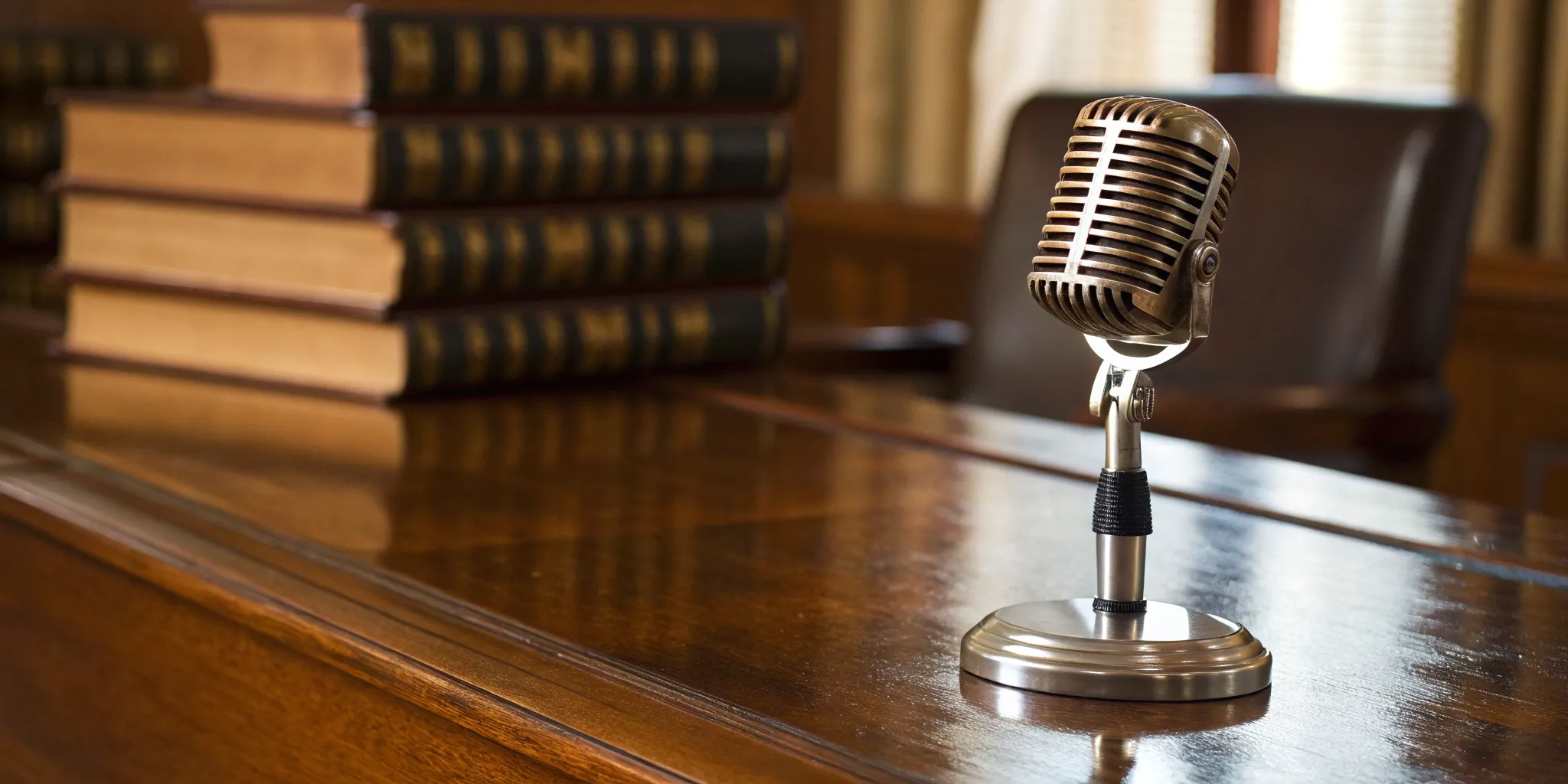You’ve written the book, built the company, or become a leading expert in your field. You have a powerful story to tell, but it feels like you’re speaking into an empty room. Getting your message in front of the right audience—the people who can truly benefit from your expertise—doesn’t happen by accident. It’s the result of a deliberate, strategic effort to connect with the media. This is where media relations comes in. It’s the bridge between your story and the public, turning your hard-earned knowledge into recognized authority. This guide will walk you through the essential media relations activities that build that bridge, helping you move from being an industry secret to a trusted, go-to voice.
Key Takeaways
- Focus on relationships, not transactions: The most effective media relations is rooted in genuine connections. Move beyond mass emails by personalizing your outreach and offering real value to become a trusted, go-to source for journalists.
- Strategy turns hope into results: Before sending a single pitch, define your specific goals, identify the right media outlets for your audience, and clarify your key messages. A clear plan ensures your efforts are focused and support your larger business objectives.
- Your strategy requires consistent action: Success comes from the steady execution of core activities, from targeted pitching and interview preparation to creating a professional press kit. These foundational steps create the momentum needed for long-term visibility.
What is Media Relations?
SMedia relations is the bridge between your story and the public. It’s the strategic work of connecting with journalists, producers, and editors to get your message featured in the media. For leaders, authors, and entrepreneurs, it’s how you move from being an expert in your field to being a recognized voice in the world. It’s less about sending out a press release and more about building a foundation for long-term visibility and influence. When done right, it ensures your story is told accurately and authentically to the people who need to hear it most.
A Simple Definition
Let’s break it down. Media relations is the strategic process of building relationships with journalists, editors, and producers to share your story. It’s a core function of public relations that focuses on getting you coverage in news outlets. Unlike advertising, where you pay for placement, media relations earns you a spot in the conversation. This is what we call “earned media,” and it’s incredibly powerful. Why? Because people trust a story they read in a reputable publication far more than an ad they see on the side of a webpage. It provides third-party validation that you can’t buy.
What Makes It Work?
Effective media relations isn’t about sending a mass email blast and hoping for the best. It’s about building real, lasting connections with the right people. This means taking a proactive approach—identifying the specific journalists who cover your industry or field and understanding what their audience cares about. The goal is to become a trusted source they can turn to for expert commentary or a compelling story. When you consistently offer value, you build credibility with journalists. This transforms your interactions from simple pitches into collaborative partnerships, leading to more frequent and positive media coverage for your brand.
Why You Need Media Relations
Media relations is more than just getting your name in the news. It’s the strategic process of building relationships with journalists, editors, and producers to share your story in a way that resonates. When done right, it’s one of the most powerful tools for building a lasting brand. Instead of paying for an ad, you’re earning credible placements that position you as a leader in your field. This is how you move from being just another expert to becoming the go-to authority people trust.
Build Trust and Credibility
Think of media relations as the ultimate third-party endorsement. When a reputable publication features your story or quotes you, it lends you their credibility. It’s one thing to say you’re an expert; it’s another for Forbes or The New York Times to say it for you. Effective media relations helps you build that trust with journalists, leading to positive coverage that solidifies your authority. For authors and CEOs, this credibility is currency. It translates directly into more opportunities, stronger partnerships, and a loyal audience that believes in your message.
Shape Public Opinion
If you don’t tell your story, someone else will. Media relations gives you the power to shape your own public narrative. It’s a vital part of managing your reputation because it allows you to proactively communicate your values and expertise. Without a clear strategy, your brand’s perception is left to chance. By consistently securing media placements, you can guide the conversation and ensure the public sees you and your business exactly as you intend. This isn’t about spinning a story; it’s about authentically presenting your truth and establishing yourself as a thoughtful leader in your industry.
Increase Your Visibility
You can have the most brilliant message in the world, but it won’t matter if no one hears it. Media relations puts your story in front of audiences you couldn’t otherwise reach. It’s about getting your name and ideas featured where your ideal clients are already paying attention. This kind of strategic public relations is designed to influence what people say about you and your work. Each placement builds on the last, creating a snowball effect of recognition that makes you a familiar and respected name. This visibility opens doors to speaking engagements, book deals, and high-level collaborations.
7 Key Media Relations Activities to Start Now
Media relations isn’t just about sending a random email and hoping for the best. It’s a series of strategic actions designed to build your profile and get your story in front of the right people. Think of these activities as the essential building blocks of your PR strategy. When you consistently execute them, you create a powerful engine for generating positive press and building a credible brand. Whether you’re launching a book, announcing a new venture, or establishing yourself as a thought leader, these seven activities are your foundation for success. They work together to create momentum, turning a single mention into a wave of media attention. Let’s break down what they are and how you can start using them right away.
1. Distribute Press Releases
A press release is your official channel for announcing something newsworthy. It’s a formal statement you send to the media to share important information about your brand, book, or business. While some say the press release is dead, it remains a fundamental tool for communicating a specific, time-sensitive story, like a book launch or a major company milestone. The key is to ensure your announcement is genuinely newsworthy and written in a clear, concise format that journalists can easily use. Think of it as providing the essential facts so a reporter can quickly understand the who, what, when, where, and why of your story.
2. Pitch to the Media
While a press release is a broad announcement, a media pitch is a highly personalized message sent to a specific journalist, editor, or producer. This is where the real relationship-building begins. A successful pitch shows you’ve done your homework—you understand the journalist’s beat, what they’ve covered recently, and why your story is a perfect fit for their audience. Instead of just sending facts, you’re crafting a compelling narrative and explaining why this story matters now. A great media pitch is tailored, timely, and offers a unique angle that will capture a journalist’s interest and persuade them to cover you.
3. Host Press Conferences and Events
For truly significant news, a press conference allows you to share your announcement with multiple journalists at once. This format is ideal for major developments that are likely to generate a lot of questions, like a groundbreaking partnership or the release of a highly anticipated report. It gives you a platform for direct interaction, allowing you to control the initial narrative and build excitement. In addition to traditional press conferences, consider hosting exclusive media events, roundtables, or webinars. These media relations opportunities provide a more intimate setting for reporters to engage with you and your story, leading to more in-depth and thoughtful coverage.
4. Prepare for Interviews
Once your pitching pays off, you’ll start landing interviews. This is your moment to shine, but it requires careful preparation. Never go into an interview without a clear plan. You need to understand the outlet, the interviewer, and the audience you’ll be speaking to. Most importantly, you must define your key messages—the two or three core ideas you want to communicate, no matter what questions are asked. Part of your preparation for interviews should also involve anticipating tough questions and practicing your responses so you can handle them with confidence and grace. This ensures you stay on message and make the most of every media opportunity.
5. Organize Media Tours
A media tour is a fantastic way to give journalists a deeper, firsthand look at your work. This could be a tour of your company headquarters, a behind-the-scenes look at a product launch, or a series of one-on-one meetings with key journalists in a specific city. By arranging visits for journalists, you move beyond the pitch and give them a tangible experience to write about. This immersive approach helps build stronger, more authentic relationships and often results in richer, more detailed stories. It shows you’re willing to be transparent and invested in helping them create unique content, which journalists always appreciate.
6. Create a Press Kit
A press kit, or media kit, is your professional calling card. It’s a curated collection of resources that gives journalists everything they need to know about you in one convenient place. A well-organized press kit makes a reporter’s job easier, which dramatically increases your chances of getting covered. It should include your professional bio, high-resolution headshots, company background information, links to past media coverage, and any relevant press releases. Having this ready to go on your website or as a shareable link shows you’re professional and prepared to work with the media.
7. Engage with Media on Social
Social media has become an indispensable tool for modern PR. Platforms like X (formerly Twitter) and LinkedIn are where many journalists discover stories, find sources, and interact with their community. Following and thoughtfully engaging with reporters in your field is a great way to get on their radar. Share their articles, offer insightful comments, and position yourself as a helpful resource. This approach allows you to build relationships with journalists in a more organic way than a cold pitch. When you do eventually reach out with a story idea, they’ll already be familiar with you and your expertise.
How to Create Your Media Relations Strategy
Jumping into media relations without a strategy is like setting sail without a map. You might get somewhere, but it probably won’t be your desired destination. A solid strategy turns your PR efforts from a series of random actions into a focused campaign designed to get you noticed by the right people, for the right reasons. It’s the difference between hoping for coverage and making it happen. Think of it as your blueprint for building authority and influence. The following steps will help you lay a strong foundation for a media relations plan that delivers real, measurable results.
Set Clear Goals
Before you write a single pitch, you need to know what you’re trying to achieve. Vague goals like “get more press” won’t cut it. Your objectives should be specific, measurable, and tied to your broader business goals. Are you launching a book and want to hit a bestseller list? Your goal might be to secure five features in national publications read by your target readers. Are you a CEO looking to establish yourself as a thought leader? A good goal would be to land three podcast interviews on top business shows this quarter. An effective media relations strategy requires a proactive approach, and clear goals are what drive that proactivity. They become your North Star, guiding every decision you make.
Identify Your Target Media
Once you know your goals, you need to figure out who can help you reach them. Don’t waste time pitching your story to every journalist you can find. Instead, focus on the outlets and reporters who speak directly to your ideal audience. To do this effectively, you must first identify the journalists and media outlets that are most relevant to your brand and your message. If you’re a non-fiction author who wrote a book on financial wellness, your target list should include personal finance editors at major news sites, hosts of money-focused podcasts, and influential finance bloggers. Create a curated media list of your top 25 or 50 dream outlets and the specific people who work there. This targeted approach ensures your story lands in front of an audience that is ready and willing to listen.
Develop Your Key Messages
When you get that big interview, what are the core ideas you want the audience to remember? These are your key messages. They are the concise, compelling, and consistent points that communicate your unique value, the core thesis of your book, or your company’s mission. Your key messages should be woven into every piece of communication, from press releases to interviews. A strong content strategy is essential because it creates a clear connection between your brand and your target audience. Take some time to distill your expertise into three to five memorable statements. Practice saying them until they feel natural. This preparation ensures you stay on-point and in control of your narrative, no matter the question.
Create a Media Calendar
Timing is everything in public relations. A media calendar is a simple but powerful tool that helps you plan your outreach around key dates and events. It allows you to map out your PR activities over weeks and months, aligning them with your book launch, product releases, industry conferences, or seasonal trends. For example, if you’re an expert in productivity, you could plan a pitch around New Year’s resolutions in December or back-to-school season in August. Your calendar should also integrate with your other marketing efforts, like your social media content and email newsletters. This creates a cohesive and powerful brand presence across all your owned media channels, making your message feel timely and relevant.
How to Build Real Relationships with Journalists
Think of media relations less as a series of transactions and more as building a professional network. The strongest media placements come from genuine connections, not from blasting a generic pitch to a hundred random email addresses. Journalists are constantly inundated with requests, so the key to standing out is to be a resource, not just another request. Building these relationships takes time and effort, but it’s the foundation of a PR strategy that delivers consistent, high-quality results. When you treat journalists like people—understanding their work, respecting their time, and offering them real value—you move from being just another pitch in their inbox to becoming a trusted source they can rely on.
Personalize Your Outreach
Before you ever hit “send” on a pitch, do your homework. Who is the journalist you’re contacting? What topics do they cover? Read a few of their recent articles or watch a segment they produced. Your initial email should show you’ve done this basic research. Mention a specific piece of their work you enjoyed and briefly explain why your story is a perfect fit for their audience. This simple act of personalization cuts through the noise. Effective media relationship management requires a proactive approach where you reach out regularly and thoughtfully, showing you understand and respect their work.
Offer Value, Not Just Pitches
Your goal is to become a go-to expert in your field. Instead of only reaching out when you want something, think about what you can offer. Do you have unique data, an interesting perspective on a trending topic, or access to an exclusive story? Share it. Providing valuable content that resonates with a journalist’s beat is how you build a connection. When you consistently offer high-quality information, you establish yourself as a credible source. This is far more effective than just sending pitches. As our team at Leverage with Media knows, a relationship built on mutual value is one that lasts and leads to incredible opportunities.
Play the Long Game
Building trust with a journalist doesn’t happen overnight. It’s a long-term investment that pays dividends in credibility and positive coverage. Don’t be discouraged if your first pitch doesn’t land. Keep the connection warm by engaging with their work on social media or sending a brief, helpful follow-up when you have new information that’s relevant to their beat. Think of it as nurturing a professional friendship. Over time, this consistent, respectful engagement helps to establish trust and credibility with journalists, which is the ultimate goal. When they trust you, they’re more likely to come to you for a quote or feature you in a story.
How to Know if Your Media Relations is Working
Putting in the work to build relationships with the media is a huge step, but how do you know if your efforts are actually paying off? It’s easy to get a thrill from seeing your name in an article, but a successful media relations strategy goes far beyond just counting placements. Measuring your results is the only way to know if your story is truly connecting with the right people and moving you closer to your goals. Think of it less as a report card and more as a roadmap, showing you what’s working, where to focus your energy, and how to refine your message for maximum impact.
For the authors, founders, and CEOs we work with at Leverage with Media, this isn’t about vanity metrics. It’s about tangible outcomes: driving book sales, attracting investors, securing speaking engagements, and cementing your status as a leader in your field. When you can clearly see the impact of your media presence, you can make smarter decisions and confidently invest in the strategies that deliver real value. The key is to look at your results from a few different angles. By analyzing your coverage, tracking engagement, checking public sentiment, and connecting it all back to your business objectives, you can build a clear picture of your success.
Analyze Your Coverage
First, look closely at the media placements you’ve earned. Not all coverage is created equal, and a single feature story in a top-tier publication can be more valuable than a dozen brief mentions in smaller outlets. When you analyze your media coverage, you’re evaluating its quality and effectiveness. Ask yourself: Was I the main subject of the article or just quoted briefly? Did the piece appear in a publication that my target audience reads? Most importantly, did it include my key messages, my bio, and a link to my website or book? Creating a simple spreadsheet to track these details can help you spot trends and see which pitches are landing the most valuable placements over time.
Track Your Reach and Engagement
Beyond the placement itself, you need to know if people are actually seeing and interacting with it. That’s where reach and engagement come in. Reach is the potential size of the audience who could have seen the article, while engagement tells you how people responded. Look at metrics like social media shares, likes, and comments on the article. You should also check your website analytics to see if a placement drove referral traffic. Seeing a spike in visitors from a specific media outlet is a clear sign that its audience is interested in what you have to offer. Tracking these metrics helps you gauge how well your messages are resonating with your target audience and which platforms give you the most traction.
Check Your Message and Sentiment
It’s not just about getting your name out there; it’s about controlling the narrative. You need to know how people are talking about you and your brand. This is called sentiment analysis. Is the tone of the conversation positive, neutral, or negative? Take time to read the comments on articles and monitor mentions of your name on social media. Listening to online conversations is one of the most effective ways to understand how your message is being perceived in the real world. If you notice a negative sentiment or a recurring misconception, you have an opportunity to step in, clarify your message, and steer the conversation back in the right direction.
Calculate Your ROI
Connecting PR efforts to a direct return on investment (ROI) can feel challenging, but it’s essential for proving its value. The key is to tie your media relations activities to specific, measurable business goals. If you’re an author, did a feature story correlate with a spike in book sales? If you’re a CEO, did an interview lead to new partnership inquiries or speaking invitations? You can make tracking easier by using custom landing pages or unique discount codes for specific media campaigns. While some people still use metrics like Advertising Value Equivalency (AVE), focusing on tangible business outcomes gives you a much clearer picture of what your PR is truly worth. Understanding the challenges of measuring ROI helps you set realistic and meaningful benchmarks for success.
How to Handle Common PR Challenges
Even the most carefully crafted media relations strategy will hit a few bumps. The key isn’t to avoid challenges—that’s impossible—but to anticipate them and have a plan ready. Whether you’re dealing with negative feedback or just trying to keep up with the 24/7 news cycle, being prepared helps you stay in control of your narrative. Here’s how you can handle some of the most common PR hurdles with confidence.
Manage a Crisis and Protect Your Reputation
A crisis can feel like it comes out of nowhere, but your response shouldn’t. Having a solid crisis communication plan is essential for protecting your hard-earned reputation. When things go wrong, your first move should be to communicate quickly, clearly, and honestly. Transparency is your best tool for maintaining trust with your audience and the media. The goal is to respond thoughtfully, not just reactively. This means having a pre-approved plan and a designated spokesperson ready, so you can manage the message from the start and mitigate potential damage before a situation spirals.
Adapt to the Evolving Media Landscape
The media world moves incredibly fast. One of the biggest challenges is maintaining credibility when news cycles are constantly churning. The solution is to be proactive instead of reactive. Building strong connections with journalists before you need them is a core part of effective media relationship management. By regularly engaging with reporters and offering them value, you become a trusted source. This requires staying agile, keeping an eye on industry trends, and being ready to adjust your strategy to fit the current media climate. It’s about being a consistent, reliable presence in your field.
Balance Traditional and Digital Media
Your audience isn’t just in one place, so your media strategy shouldn’t be either. A successful approach requires a smart mix of traditional and digital media. Think of it this way: a feature in a major magazine gives you credibility, while a targeted social media campaign around that feature expands its reach. You need to integrate both traditional and digital media to effectively connect with your audience. This means paying close attention to your own social channels as part of your overall strategy. The right balance depends on your goals and where your audience spends their time, but a multi-channel approach is almost always strongest.
The Right Tools for Media Relations
Even the most well-crafted message can get lost without the right systems to support it. Think of media relations tools as your dedicated behind-the-scenes crew, working to ensure your strategy runs smoothly and efficiently. They handle the time-consuming tasks of finding the right contacts, tracking online conversations, and distributing your content, which frees you up to focus on what truly matters: building genuine connections with journalists. While nothing can replace the human element of public relations, the right tech stack makes your efforts significantly more targeted and impactful. It’s the difference between shouting into the void and having a meaningful conversation with the exact people who can share your story with the world. These tools provide the data and automation needed to execute a modern PR campaign effectively. When you combine this powerful technology with proven PR strategies, you create a system that not only gets you noticed but also helps you build a credible, lasting reputation. It’s about working smarter, not just harder, to achieve the visibility your brand deserves.
Media Monitoring Tools
To effectively manage media relationships, you need a proactive approach. You can’t just send a pitch and hope for the best; you need to be part of the ongoing conversation. Media monitoring tools are your eyes and ears, constantly scanning the internet for mentions of your name, brand, competitors, and key industry topics. This allows you to stay informed about relevant trends and respond quickly to media requests or breaking news. By tracking what’s being said and who’s saying it, you can identify opportunities to offer your expertise and position yourself as a go-to source for journalists covering your field. It’s a critical step in moving from reactive damage control to proactive reputation building.
Journalist Contact Databases
Your story is powerful, but it will only land if you tell it to the right people. A journalist contact database is an essential tool for ensuring your pitches reach the most relevant reporters, editors, and producers. These platforms go beyond simple contact lists, offering detailed information on what journalists cover, their recent articles, and even their contact preferences. This allows you to identify the journalists and media outlets that align perfectly with your message. Instead of sending generic, mass emails, you can build targeted lists for personalized outreach that shows you’ve done your homework and respect their work. This thoughtful approach is key to getting your email opened and read.
Content Creation and Distribution Tools
A strong content strategy is the foundation of any successful media relations effort because it creates a direct connection with your audience and gives journalists a reason to care. Modern tools make it easier than ever to create and share professional, high-quality content. This includes everything from designing a sleek digital press kit and writing compelling press releases to producing short-form videos for social media. When you provide journalists with well-packaged, engaging materials, you make their job easier and significantly increase the chances of your story getting picked up. It shows you’re a professional who is organized, prepared, and ready for the spotlight.
What’s Next in Media Relations?
The media world is constantly changing, and the strategies that secured headlines yesterday might not work tomorrow. With news cycles moving faster than ever, the core of modern media relations is shifting from simply reacting to events to proactively shaping your own narrative. This isn’t about waiting for the phone to ring; it’s about giving journalists a reason to call you in the first place. The future belongs to leaders who are consistently visible, valuable, and ready to engage.
A successful approach requires a proactive strategy, where you regularly offer insights and build genuine connections with the press. At the same time, your digital presence has become your new business card. Before a journalist even considers your pitch, they will vet your website, your social media, and your existing content. Growing your owned media—like a personal blog or a newsletter—gives you a platform to control your story and demonstrate your expertise on your own terms.
This proactive mindset also applies to how you choose your targets. Mass-emailing a generic press release is no longer effective. The key is to meticulously identify the right journalists and media outlets whose audiences align perfectly with your message. This targeted outreach shows you’ve done your homework and respect their work, making them far more likely to listen. By adapting to these changes, you can move beyond just getting press and start building a lasting, credible brand.





































































































